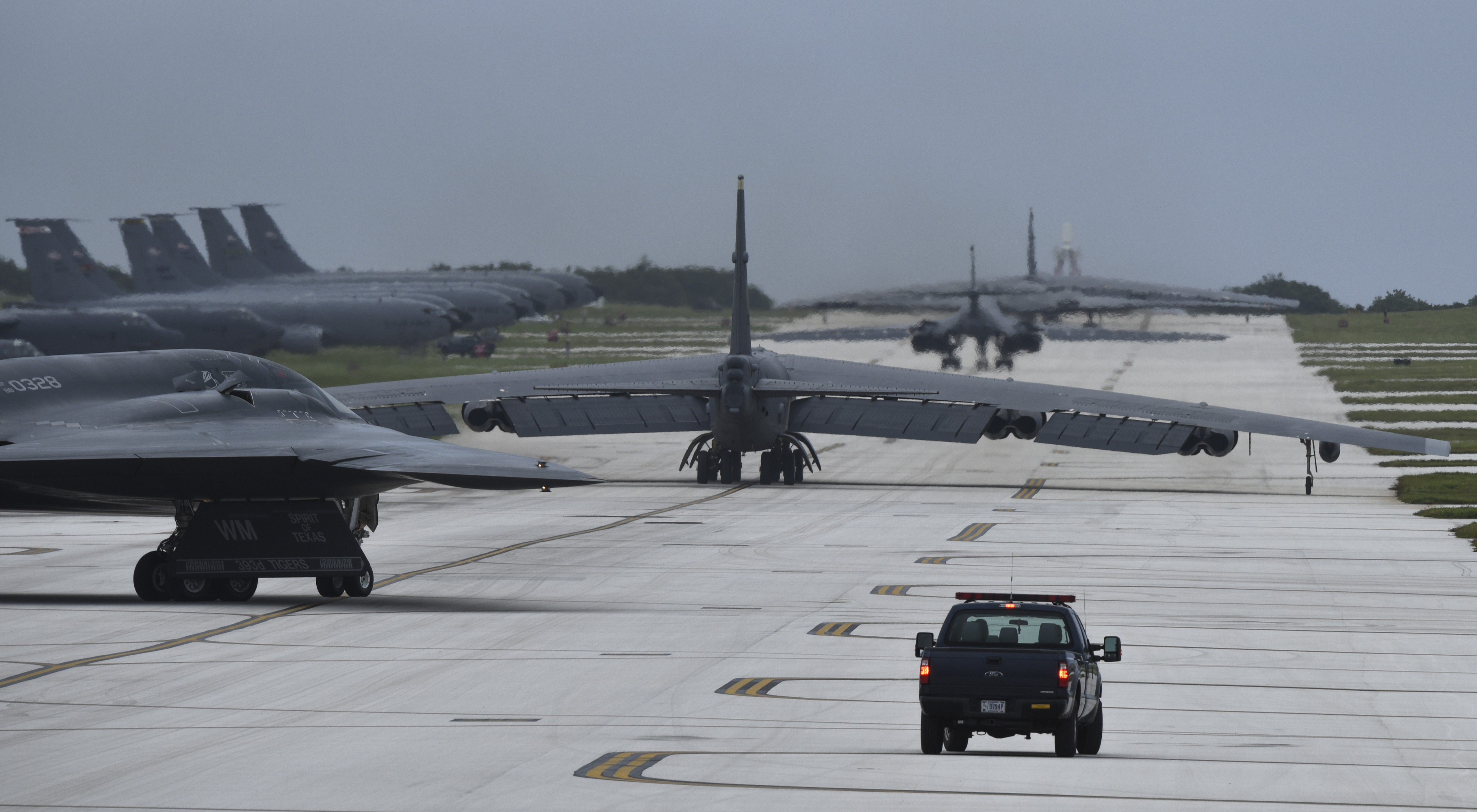
A B-52 Stratofortress, B-1 Lancer, and B-2 Spirit prepare to launch from Andersen AFB, Guam, for an integrated bomber operation Aug.17, 2016. Air Force photo by TSgt Richard P. Ebensberger.
Even though the Air Force plans to increase the number of its bomber squadrons by 55 percent in the coming years, the Bomber Roadmap is unchanged until some five more studies are completed and Congress goes along, Air Force Global Strike Command boss Gen. Timothy Ray said.
In a press conference, Ray said the “Force We need” numbers—which would raise today’s bomber squadrons from nine to 14—is “not synchronized” with AFGSC’s Bomber Vector, which was unveiled in January. That study emphasized that AFGSC would have to live within manpower limits, which would make retaining the B-1 and B-2 bombers untenable past the 2033 point. The command is planning to neck down to a force of stealthy B-21 bombers and venerable B-52s after that.
“This is the beginning of the debate,” Ray told reporters. There are “lots of moving parts” to the ultimate goal number of bomber squadrons, but keeping the B-1 and B-2 until 2050, as AFGSC plans to do with the B-52, is “not possible,” he said. “Five other studies have to happen” before hard numbers are developed, he said.
Ray declined to specify the implications of adding another five squadrons of bombers to the fleet. That number is driven by an assessment, requested by the top DOD leadership, of what a “moderate risk” bomber fleet would look like, Ray noted. He could not immediately say what the difference between a “moderate” and “low” risk force might be. The Air Force has not specified how many B-21 bombers it plans to acquire, saying only that the number is in excess of 100 units.
The “Force We Have” study is “not ready to be translated into tails,” he asserted. However, the numbers in the study reflect what regional commanders state as their requirements.
Ray said he asked for a briefing on the new stealth bomber last week, and reported that it is “doing very well. … The program is a good one. … Things are coming together.”
While things get sorted out, Ray said Global Strike is focusing on upgrading the B-1 and B-2 for the coming 15 years or so. “Our job is to deliver all the mods” on those aircraft in a timely manner, he reported.
Asked if he has any concerns about the reliability of nuclear warheads in the strategic inventory, Ray said he does not, despite the continuing ban on testing. The ban, he said, is a political choice, and “modernization” of warheads is ongoing. He likewise declined to offer a forecast as to whether NATO will change its status of keeping nuclear weapons at Incirlik, Turkey, given the turmoil in that country. Such a decision is an Alliance choice, and is unlikely to change swiftly, he suggested.
Ray said the investigation of B-1 ejection seats continues, after a recent accident causing one of the bombers to land after an ejection seat failure. However, B-1 operations haven’t been affected, Ray said. Training on B-1s has been limited to aircraft known to have safe seats, he added.